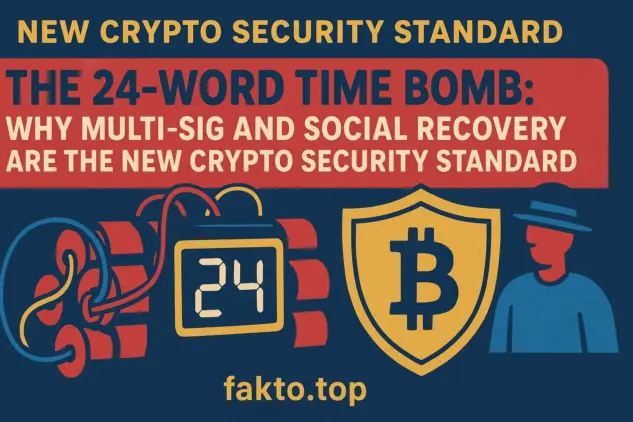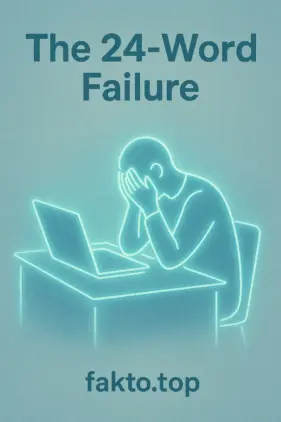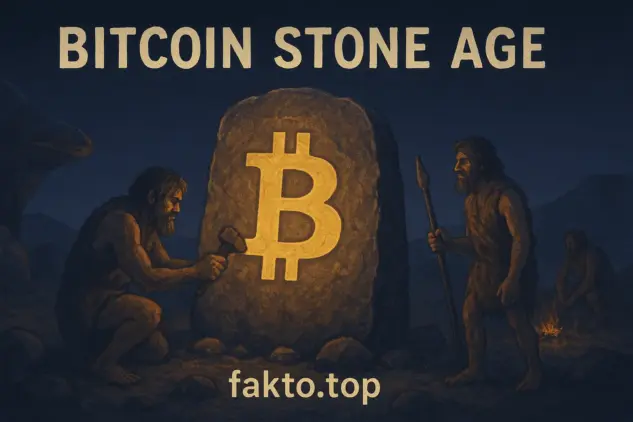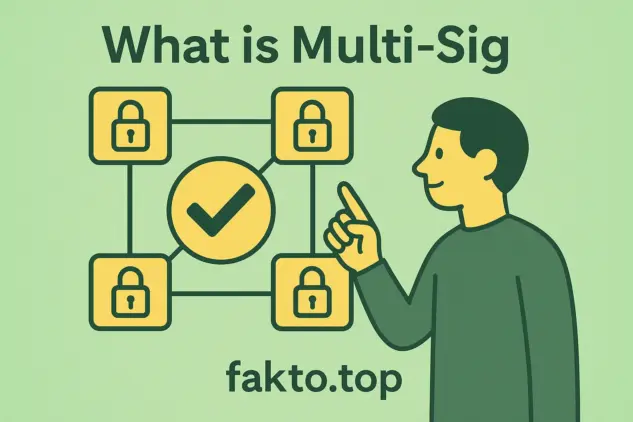Why Multi-Sig and Social Recovery Are the New Crypto Security Standard
The 24-Word Failure: Why the Seed Phrase is Web3’s Biggest Risk and How Smart Wallets Protect Your Capital
I. The Problem: The Single Point of Catastrophic Failure
Let’s start with a brutal truth: the 24-word seed phrase — the so-called “gold standard” of crypto security — is an elegant disaster waiting to happen. It’s the kind of thing that looks genius on paper, until you realize it literally is paper. Your entire financial sovereignty reduced to a fragile slip that could be lost, burned, stolen, or simply forgotten.

For over a decade, the seed phrase has been worshipped as sacred scripture — 24 random words that unlock your digital fortune. “Write it down and keep it safe,” they said. “You are your own bank,” they said. But here’s the uncomfortable reality: you are also your own security department, your own backup system, and your own disaster recovery team. And unlike a real bank, there’s no “Forgot Password” button when things go south.

The brilliance of the seed phrase lies in its cryptographic perfection. Mathematically, it’s flawless. Practically? It’s a ticking time bomb. The system assumes you are a robot — one that never makes mistakes, never loses things, never dies in a house fire, and certainly never misplaces a piece of paper during a move. The moment you behave like a human, the system collapses.
The Flaw: Security Designed for Machines, Not People
Let’s strip this down: a seed phrase is just a single private key represented in a human-readable format. It’s the master key to everything — your funds, your NFTs, your DeFi positions, your entire on-chain identity. And like any master key, it’s a single point of catastrophic failure.
Lose it once, and you’re locked out forever. Let someone copy it, and you’re wiped out in seconds. No alerts, no 2FA, no rollback. It’s digital finality in the most brutal sense of the word.
Imagine you owned a mansion with all your assets inside — and the only way in or out was one physical key. That key cannot be duplicated, cannot be changed, and anyone who ever sees it owns the house forever. That’s your seed phrase. And most people keep it in a drawer, a photo on their phone, or a notebook labeled “important passwords.”
The Hidden Cost: Web3 Is Less Forgiving Than Web2
Ironically, Web2 — the thing crypto was supposed to replace — is safer for the average user when it comes to account recovery. Lose your Gmail password? You can verify your identity, get an email, a code, a phone prompt. Web3 gives you none of that. Forget your seed phrase, and your wealth becomes digital dust.
This is why, in practice, even experienced users end up doing the very thing crypto ideology forbids — trusting custodians. Exchanges, wallet services, and centralized apps step in to “help” manage risk, and before long, we’ve reinvented the very banks we were supposed to escape. The tragedy is: the system wasn’t designed for human failure, yet humans are its primary users.
Archaic Security from the Bitcoin Stone Age
Seed phrases belong to a different era — the Bitcoin Stone Age — when a wallet was just a dumb key manager, and the biggest security threat was losing your USB stick. But the ecosystem evolved; billions in assets, complex DeFi contracts, on-chain DAOs, multi-chain portfolios. Yet our core recovery method hasn’t changed since 2013. It’s like using a medieval lock on a digital vault.

And here’s the punchline: people still call this “self-custody.” But true sovereignty isn’t about clutching a piece of paper — it’s about having resilient architecture. A system that tolerates human error, supports redundancy, and eliminates the single point of failure.
The Psychological Trap
There’s also a subtle psychological element. That 24-word phrase gives a false sense of control — it feels empowering to “own” your keys. But it’s really just transferring risk from an institution to the individual. The illusion of autonomy hides the real truth: you’re one bad decision away from losing everything. One misplaced backup, one wrong copy-paste, one phishing link, and it’s over. No customer service, no appeal, no second chances.
The industry has quietly accepted this failure as a necessary evil — a trade-off for decentralization. But technology should evolve beyond human punishment. We’ve built smart contracts that can execute billion-dollar transactions, but we’re still using caveman methods for account recovery.
The Coming Shift
The seed phrase era is ending — not with a bang, but with a slow, inevitable collapse. As more people lose access, get hacked, or die without passing on their phrases, the ecosystem is learning the hard way: sovereignty without redundancy is not freedom. It’s fragility dressed as freedom.
Enter the next generation of crypto security — Multi-Signature and Social Recovery. Two models designed for the world we actually live in: messy, human, and unpredictable. They don’t replace trust — they rearchitect it. And that’s where true security begins.
II. Solution A: Institutional Gold Standard (Multi-Sig)
What is Multi-Sig (Multi-Signature)?
If the 24-word seed phrase is a single, fragile key, Multi-Sig is a fortified vault with multiple guards. Technically, a Multi-Signature wallet requires more than one cryptographic signature to execute a transaction. Practically, it’s like needing approval from several bank managers before a wire transfer goes through. One rogue or careless signer can’t drain your funds — the system demands consensus.

Multi-Sig is the security standard for institutional crypto because it converts a single point of failure into a distributed responsibility. Instead of “lose your paper, lose everything,” it’s “lose one key, nothing happens — just find another signer.”
The 3/5 Rule: Security as a Decentralized Committee
Let’s make this concrete. Suppose you set up a 3-of-5 Multi-Sig wallet using Gnosis Safe. Here’s how it works:
- You assign 5 keyholders — could be devices, hardware wallets, or trusted individuals.
- At least 3 of these 5 must approve any outgoing transaction.
- If a key is lost, stolen, or compromised, the remaining signers maintain full control.
This transforms your security model from “fragile single key” to “resilient committee.” It’s not just protection — it’s governance baked into the wallet.
The Anti-Hype: Multi-Sig Isn’t Perfect
Now, let’s be brutally honest. Multi-Sig is slow and cumbersome for daily transactions. You can’t just tap “send” like in Metamask. Each transaction waits for multiple signatures. That’s a feature for vaults, not your morning coffee purchase.
There’s also custodian risk: if your keyholders are people, devices, or services, you must trust them to act properly. Bad coordination can freeze your funds. Miscommunication can delay access for hours or even days. Multi-Sig doesn’t make human errors vanish — it just mitigates catastrophic single-point failure.
Practical Application: Gnosis Safe Setup
Here’s a high-level roadmap to implement a 3/5 Multi-Sig wallet:
- Choose your keyholders: hardware wallets, team members, or cloud HSMs.
- Create a Gnosis Safe smart contract wallet on Ethereum (or other supported EVM chains).
- Set the signature threshold (e.g., 3-of-5).
- Fund the wallet with your main assets or DAO treasury funds.
- Test small transactions to verify all keys can sign properly.
- Document the recovery procedure internally (do not rely on a single person’s memory).
After setup, your portfolio is no longer hostage to a single lost seed phrase. Even if one or two keys vanish, your assets remain safe.
Why Multi-Sig Is the Gold Standard
Because it embraces reality: humans are messy, devices fail, threats exist everywhere. Multi-Sig doesn’t pretend otherwise. It distributes responsibility, introduces accountability, and enforces governance. This is why DAOs, hedge funds, and institutional treasuries use it for billions in assets.
Bottom line: Multi-Sig transforms the old “master key” nightmare into a structured, predictable, and auditable security framework. But remember — it’s a vault, not a spending account. For daily usability combined with security, the next frontier is Social Recovery, powered by Account Abstraction.
III. Solution B: The Human-Friendly Future (Social Recovery)
How Account Abstraction (ERC-4337) Changes Everything
Account Abstraction, standardized in ERC-4337, is the tech equivalent of upgrading your wallet from a padlock to a programmable vault. It turns a plain key manager into a smart contract capable of redefining how transactions and recovery work. Forget the old-school seed phrase mindset — the wallet itself can enforce rules, delegate authority, and recover access without exposing your keys.
In plain English: your wallet becomes a digital guardian with logic built in. Lost access? The smart contract won’t just shrug. It will let a pre-approved group of trusted parties verify your identity and issue a new key — without ever handing them the original private key.
Social Recovery: Trust Your Friends, Not Their Wallets
Social Recovery is deceptively simple and radically human-friendly. You pick “Guardians” — people you trust. These could be friends, family, or even one of your own devices. If you lose access, they collectively approve a reset, and your wallet generates a new key for you. Importantly, they never hold your funds or keys — they simply vouch that it’s really you.
Think of it like a digital notary service run by your social circle. In the analog world, a notary verifies your signature. In Web3, your Guardians verify your identity to the smart contract. The result: secure recovery without the tyranny of a single paper slip.
The Skepticism: Why You Should Still Think Twice
Yes, your first reaction is probably: “Trusting my friends with my bank access? Bad idea.” And it is — if you’re handing over the keys. But Social Recovery doesn’t work like that. The only trust you place is in the implementation of the wallet itself. ERC-4337 smart contracts enforce the rules, making human errors less catastrophic.
There are still risks: poorly coded wallets, malicious contracts, or unthoughtful Guardian selection. But in practice, these are much smaller than leaving a seed phrase on a sticky note under your mattress.
Practical Application: Argent Wallet Setup
- Download Argent and create a new smart contract wallet.
- Select 3–5 trusted Guardians (friends, family, or devices).
- Verify that each Guardian approves your recovery setup.
- Fund your wallet and test small recovery scenarios to ensure the process works.
- Document your Guardian choices securely — don’t rely on memory alone.
Once setup is complete, you can operate a daily wallet with freedom and confidence. Lost phone? No panic. Hardware failure? Not catastrophic. Seed phrase? Obsolete.
HTML Comparison Table: Legacy, Multi-Sig, Social Recovery
| Feature | Legacy System (24-Word Seed) | Institutional (Multi-Sig) | Future (Social Recovery) |
|---|---|---|---|
| Access Key | 1 Master Key (Single Point of Failure) | Multiple Keys | Programmable Smart Contract |
| Recovery Method | Physical Backup Only | Consensus Vote (N of M signers) | Trusted Guardians (They reset, but don’t hold the key) |
| Transaction Speed | Fast (One signature) | Slow (Requires multiple signatures) | Fast (Single user signature) |
| Cost | Free to create | Deployment Gas Fee | Deployment Gas Fee |
| Best For | Small, disposable funds | DAO Treasuries & Large Vaults | Personal Main Wallet & Daily Use |
IV. Practical Toolkit: How to Upgrade Today
For Beginners: Setting up an Argent or Safe Smart Wallet
If you’re new to crypto and just got your first hardware wallet, here’s a simple, no-nonsense way to step into next-generation security:
- Download Argent (iOS or Android) and create a new smart contract wallet.
- Choose 3–5 trusted Guardians. These can be friends, family, or your own devices.
- Verify the Guardians’ setup and confirm the Social Recovery rules.
- Fund your wallet with small amounts first and test the recovery process.
- Use your wallet daily, knowing that losing access won’t mean permanent disaster.
Key takeaway: Social Recovery lets you operate safely without memorizing a 24-word phrase. You get usability and resilience in one package.
For Advanced Users: Migrating to Gnosis Safe Multi-Sig
If you hold a portfolio of real size — DAO treasury, NFT collection, or high-value assets — a Multi-Sig vault is the only responsible approach:

- Choose your 3–5 keyholders (hardware wallets, trusted teammates, or cold devices).
- Deploy a Gnosis Safe smart contract wallet on your preferred EVM chain.
- Set the threshold, e.g., 3-of-5, to balance security and usability.
- Transfer assets from your old wallet (Metamask, Ledger, etc.) to the Multi-Sig wallet.
- Test small transactions and approvals to ensure all signers work correctly.
- Document recovery procedures securely for your team or DAO.
Remember: Multi-Sig is about governance and catastrophic failure mitigation, not daily convenience. Use it wisely for high-value holdings.
V. HTML Comparison Table: Legacy, Multi-Sig, Social Recovery
| Feature | Legacy System (24-Word Seed) | Institutional (Multi-Sig) | Future (Social Recovery) |
|---|---|---|---|
| Access Key | 1 Master Key (Single Point of Failure) | Multiple Keys | Programmable Smart Contract |
| Recovery Method | Physical Backup Only | Consensus Vote (N of M signers) | Trusted Guardians (They reset, but don’t hold the key) |
| Transaction Speed | Fast (One signature) | Slow (Requires multiple signatures) | Fast (Single user signature) |
| Best For | Small, disposable funds | DAO Treasuries & Large Vaults | Personal Main Wallet & Daily Use |
VI. Conclusion & Final Security Matrix
V. Conclusion & Final Security Matrix
Final Verdict: The 24-word seed phrase is dead. It served its purpose in the Bitcoin Stone Age, but it’s a single point of catastrophic failure in today’s Web3 ecosystem. Multi-Sig and Social Recovery wallets represent the future: distributed responsibility, programmable recovery, and human-centric security.
The Cautious Takeaway: Technology solves technical flaws, but not human flaws. Selecting untrusted Guardians, signing malicious contracts, or misconfiguring a Multi-Sig threshold are still real risks. Security is now architecture plus discipline.
Q&A Section: Answering Skepticism
Q: If I lose my phone, can my friend steal my crypto through Social Recovery?
A: No. Social Recovery wallets do not give Guardians access to your funds. They only approve a recovery request if you initiate it. Your keys remain safe.
Q: Do Multi-Sig wallets work on all crypto networks (Bitcoin/Solana)?
A: Multi-Sig is widely supported on EVM-compatible chains (Ethereum, Polygon, etc.) and several others via specialized protocols. Bitcoin and Solana have Multi-Sig, but implementations differ; check network-specific documentation.
Q: Does ERC-4337 mean I don’t need a Seed Phrase at all?
A: Yes, in modern smart wallets, seed phrases are optional. Account Abstraction allows programmable recovery and daily usability without the archaic 24-word slip of paper.
Summary of the Problem
The 24-word seed phrase, once hailed as the ultimate form of self-custody, is no longer adequate for today’s crypto ecosystem. It represents a single point of catastrophic failure: lose it, copy it, or misplace it, and your assets are irretrievably gone. Human errors, physical damage, theft, and social engineering make this “gold standard” extremely fragile. Multi-Sig and Social Recovery wallets address these flaws, distributing responsibility, providing programmable recovery, and making crypto security both resilient and human-friendly.
Disclaimer
This article is for educational purposes only. It does not constitute financial, legal, or investment advice. Crypto assets carry inherent risks, and implementing Multi-Sig or Social Recovery wallets requires careful planning, proper configuration, and personal discretion. Users remain responsible for their decisions and should independently verify all technical steps before transferring or storing assets.
